Emerald Green Arborvitae Info: Tips On Growing Emerald Green Arborvitae
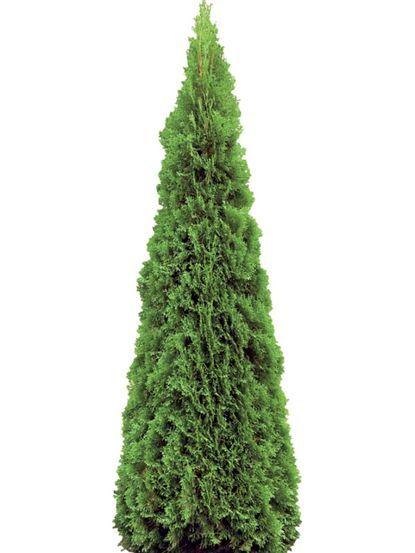

Arborvitae (Thuja spp.) are one of the most versatile and popular evergreens for the home landscape. They are used as formal or natural hedges, privacy screens, foundation plantings, specimen plants, and they can even be shaped into unique topiaries. Arborvitae look good in almost all garden styles, whether it be a cottage garden, Chinese/Zen garden, or formal English garden. The key to successfully using arborvitae in the landscape is selecting the proper varieties. This article is about the popular variety of arborvitae commonly known as ‘Emerald Green’ or ‘Smaragd’ (Thuja occidentalis ‘Smaragd’). Continue reading for Emerald Green arborvitae info.
About Emerald Green Arborvitae Varieties
Also known as Smaragd arborvitae or Emerald arborvitae, Emerald Green arborvitae is one of the most popular varieties of arborvitae for the landscape. It is often selected for its narrow, pyramidal shape and deep green color. As the flat, scale-like sprays of foliage mature on this arborvitae, they turn a deeper shade of green. Emerald Green eventually grows 12 to 15 feet (4-5 m.) tall and 3 to 4 feet (1 m.) wide, reaching its mature height in 10 to 15 years. As a variety of Thuja occidentalis, Emerald Green arborvitae are members of the eastern white cedar family. They are native to North America and range naturally from Canada down to the Appalachian Mountains. When French settlers came to North America, they gave them the name Arborvitae, which means “Tree of Life.” Although in different regions Emerald Green arborvitae may be called Smaragd or Emerald arborvitae, the three names refer to the same variety.
How to Grow Emerald Green Arborvitae
When growing Emerald Green arborvitae, they grow best in full sun but will tolerate part shade and especially prefer to be partially shaded from the afternoon sun in the warmer parts of their zone 3 through 8 hardiness range. Emerald Green arborvitae are tolerant of clay, chalky, or sandy soil, but prefer a rich loam in a neutral pH range. They are also tolerant of air pollution and black walnut juglone toxicity in soil. Oftentimes used as privacy hedges or to add height around corners in foundation plantings, Emerald Green arborvitae can be trimmed into spiral or other topiary shapes for unique specimen plants. In the landscape, they may be susceptible to blights, canker, or scale. They can fall victim to winter burn as well in areas of high winds or damaged by heavy snow or ice. Unfortunately, deer also find them to be particularly appealing in winter when other greens are scarce.
Gardening tips, videos, info and more delivered right to your inbox!
Sign up for the Gardening Know How newsletter today and receive a free download of our most popular eBook "How to Grow Delicious Tomatoes."
-
 Modern Houseplants That Elevate Any Contemporary Home
Modern Houseplants That Elevate Any Contemporary HomeTry these 6 houseplants to pair with your modern style home.
By Tonya Barnett
-
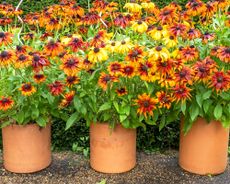 8 Flowering Perennials For Pots – To Bring Joy Every Year
8 Flowering Perennials For Pots – To Bring Joy Every YearThese beautiful perennials are long-term investments for your container garden, as they will return year after year with a profusion of blooms.
By Amy Grant
-
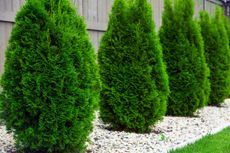 Arborvitae Plant Varieties: Getting To Know Different Types Of Arborvitae
Arborvitae Plant Varieties: Getting To Know Different Types Of ArborvitaeArborvitae are perfect for many landscapes used as single focal points or as part of a windbreak or privacy fence. If you need a different size or are interested in various cultivars, check out the following varieties of arborvitae in this article.
By Becca Badgett
-
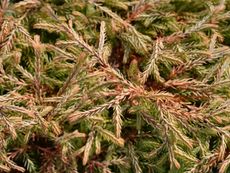 Mr. Bowling Ball Arborvitae: Tips For Growing A Mr. Bowling Ball Plant
Mr. Bowling Ball Arborvitae: Tips For Growing A Mr. Bowling Ball PlantPlant names often give a glimpse into the form, color, size and other characteristics. Mr. Bowling Ball Thuja is no exception. The resemblance to its namesake as a domed plant that snugs into awkward spaces makes this arborvitae an attractive addition. Learn more here.
By Bonnie L. Grant
-
 Caring For Thuja Evergreens: How To Grow A Green Giant Arborvitae
Caring For Thuja Evergreens: How To Grow A Green Giant ArborvitaeFew garden plants grow faster or taller than the Thuja Green Giant. This enormous and vigorous evergreen can quickly tower above you and, in a few years, grow taller than your house. For more information about Thuja Green Giant plants, click here.
By Teo Spengler
-
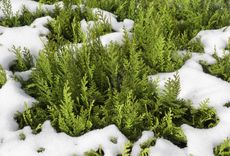 Arborvitae Winter Care: What To Do About Winter Damage To Arborvitae
Arborvitae Winter Care: What To Do About Winter Damage To ArborvitaeIf you have arborvitae in your yard and you live in a cold climate, you have probably seen that they occasionally suffer winter damage. For more information about winter injury on arborvitae bushes, this article will help.
By Teo Spengler
-
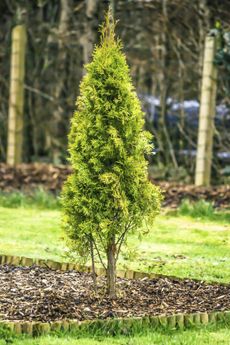 Fertilizing Arborvitae – When And How To Fertilize An Arborvitae
Fertilizing Arborvitae – When And How To Fertilize An ArborvitaeBeloved for their fast growth, arborvitae often require fertilizer to thrive. It isn?t difficult to begin fertilizing arborvitae. Click on this article to learn how to fertilize an arborvitae and the type of fertilizer for arborvitae.
By Teo Spengler
-
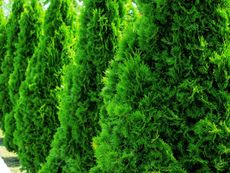 Arborvitae: Ultimate Care And Growing Guide
Arborvitae: Ultimate Care And Growing GuideArborvitae is a versatile evergreen in the landscape. Arborvitae trees are hardy and can grow tall for screening, or kept trimmed as a hedge.
By Bonnie L. Grant